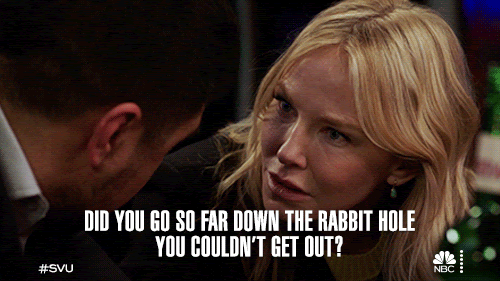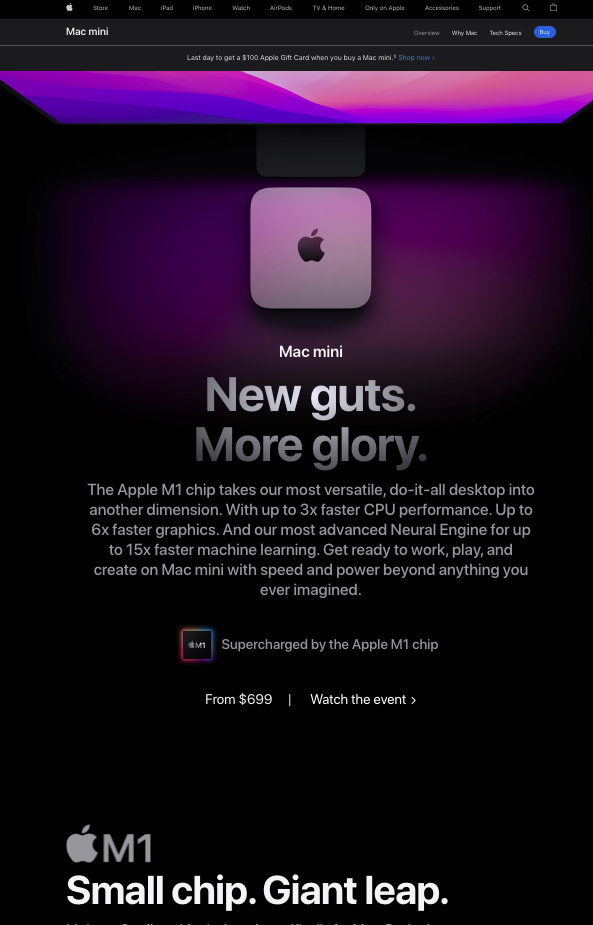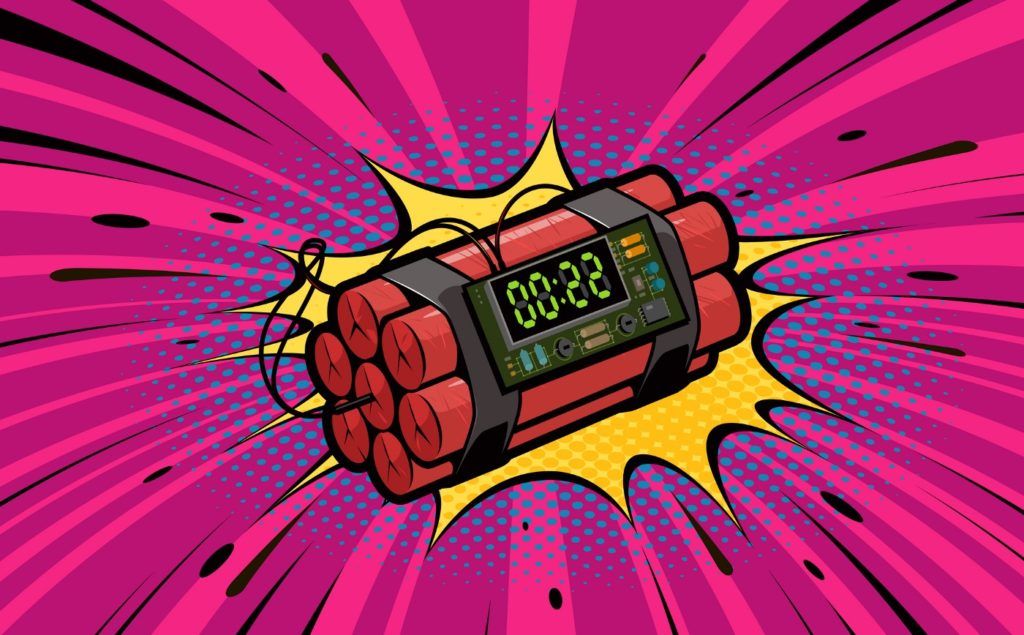Do you have an online business and want to uplevel your efforts next year? Does it often feel like you have to do all the things and show up everywhere in order to gain any sort of traction?
You’re not alone. For most of us, our forays into online entrepreneurship are piecemeal.
One week we learn about marketing strategy. The following week we learn about offers. And then the next week a completely different shiny object has our attention. It’s all so damn convincing, too!
To Break Revenue Records Next Year, Define Your "1–1–1 Framework" - Post Outline
So we go down every rabbit hole we come across.
Fast forward six months, and… well, we feel so spun around that analysis paralysis has taken hold and we have no idea what to prioritize next.

If this sounds like you, it’s time to take a step back and identify your 1–1–1 framework. What are the “ones” of the 1–1–1 framework? I’ll tell you right now — along with what you should consider before finalizing your strategy for more revenue and growth in the coming year.
Framework Component #1: One Offer (But only after a period of testing)
I’m a fan of trying out multiple offers. Testing out different offers not only helps you figure out what you like and are great at; it can also be more lucrative.
The drawback of this testing stage is that it’s easy to stay in it forever. When you’re promoting many different offers, it’s harder to create systems and processes or bring in support.
I recently exited my “testing” phase, which lasted about 18 months. I tested selling my expertise in the form of 1-on-1 retainers, coaching, done-for-you-services, half-day intensives, and online courses.
I realized what I enjoy most is working with established entrepreneurs in a leveraged way. So I went all-in on one offer and concept: A business and writing accelerator. The clients I help are businesspeople with established offers looking to navigate the visibility mucky-muck that is the world wide web.
Accelerators are more hands-on and custom than a course, but not as expensive as corporate consulting or agency services, which often price out solopreneurs. There are successful online entrepreneurs making between $60K and $300K/year who want hands-on strategy and community with other professionals at a similar level.
There are other demographics and psychographics we took into consideration, which I won’t get into for the sake of brevity. Just know that I never would have been able to reach these conclusions had I not put myself out there in the first place.
Don’t try to scale something that drains you
I kept trying to scale up an offer that was exhausting to deliver. My health is a wreck these days, and part of that is likely because I pushed too hard on an offer that wasn’t a hell yes for both my clients AND myself. Clients were happy… but I was cooked. And when my body stopped working, things got tough, and it became obvious I couldn’t do what I was doing anymore.
Your eventual goal is to zero in on one offer. Take a moment to determine whether you are in a “testing phase” or an optimization phase in your business.
- If you’re in a testing phase, test often and embrace the scientific method.
- If you’re in an optimization phase, focus all of your efforts on making your one offer fantastic and a no-brainer for your target audience.
Framework Component #2: One Sales Mechanism
There are four sales mechanisms in online business: Sales page, presentation, 1-on-1 sales call, and live event. Sales pages are sometimes used in tandem with one of the other mechanisms. All four mechanisms work, but each requires different preparation.
What’s important is to find and develop the sales mechanism that works best for you. Let’s do a quick flyover of each approach.
#1: Sales page
Good for: Offers < $1,000 USD
Also known as sales letters in copywriter culture, sales pages promote and sell your product in your absence. They can be short, like when you’re shopping for a product on someone’s Shopify store, or they can be long. Sometimes they’re really long.
The more objections you have to overcome, the longer your sales page needs to be. This is why you want to use content to educate and help your readers prior to selling to them.
If you have to spend your sales letter laying groundwork, you’ll end up with a web page that stretches from here to Timbuktu.
You see sales pages and product pages all the time without even realizing it. For example, here’s the sales page for Apple’s Mac Mini (Which I am dangerously close to purchasing):

As you can see, sales pages don’t even have to be long; they just have to be clear and sell the product without you actually being with your prospect in real-time.
Sales pages are the fulcrums of many a passive income machine. To build one, however, you have to know the basics of copywriting.
#2: Presentation
Good for: Offers > $200 USD
When I say presentation, I’m referring to a webinar, or perhaps even — **old school alert!** — an in-person seminar.
Presentation refers to any selling situation in which you are in a “one-to-many” selling container. You teach and pitch once, and many people hear your pitch at the same time. Presentations are a very well-leveraged use of time.
I like webinars because they’re virtual, and I do about an 80/20 ratio of content to selling. People can come to the webinar for free and get action steps, and then if they decide they want to implement those action steps faster or with my assistance, then they can purchase the offer. Everyone has something to do after the webinar is over, which feels very win-win. Use your presentation to focus more on the “what” and the “why” of your value proposition. Then let interested attendees purchase the “how” from you if they so choose.
And don’t be this person
Don’t be the person who tells us the webinar is live when it actually isn’t. We’re not idiots; just tell us it’s a replay or an on-demand recording. Live is preferred; your audience is showing up live, so you should too. As a bonus, you get better at live facilitation, which will serve you in many ways down the line.
Deliver a valuable webinar or seminar. Then at the end, send attendees to a sales page, a checkout page, or to a form where they can book a call with you.
#3: 1-on-1 sales call
Good for: Offers > $500 USD
Discovery calls have been a tried-and-true sales mechanism for decades. Meet with a prospect, let them ask questions, and then lay out the next steps you think are best for them.
In online coaching and consulting, a popular industry standard for conversion is about 20–25%.
- If you’re below that number, you might want to tweak your offer or process.
- If you’re wayyyy above that number — which is a lot of you, actually — it’s time to be bold and either raise your prices or get more sales calls on the books each month.
(Mindset memo: This means your sales calls should be failing 75–80% of the time. This is why salespeople are often bionic optimists. In this industry, rejection is your frenemy.)
Don’t know how many calls you’re doing a month? Track it. Maybe you’re not doing as many calls as you need to be to hit your targets; if that’s the case, your next action steps are clear.
#4: Live event
Good for: Offers > $5,000 USD
Godspeed to you if you’re doing live events these days; pandemic precautions ebb and flow from one quarter to the next. If you do deliver a knockout live event, however, you can book all the revenue you need for a quarter or even the whole year from a few days of focused effort.
This type of event in online business is called a fulfillment event. People are deeply immersed in what you do and your value proposition, and throughout the event an opportunity to go deeper (The sale) is laced into the curriculum.
These events are usually intimate: 100 attendees or less. Think “meeting of the minds” more than a Tony Robbins seminar.
A caveat
Live events are the hardest thing to sell online. When you have butts in seats, you often have a prospect’s undivided attention, which is very rare. In those moments, people are more willing to commit to a long-term agreement with you.
Many masterminds and larger offers use this selling structure. I was formerly at an agency that used this model to book most of its retainers for the year ($5,000 event into 12-month offers ranging from $25K-$100K).
Event selling is high pressure, but can be incredibly lucrative when done well. Your backend offer should be somewhere between 3x and 20x of the event’s ticket price to make it worth your while.
Framework Component #3: One Marketing Platform
If you’re doing less than a quarter of a million dollars a year, you don’t need to be on TikTok, Twitch, LinkedIn, Instagram, Clubhouse, YouTube, AND Twitter.
Maintain an email list (Please), then choose ONE marketing platform on which you can strut your stuff and direct people toward that list or other private feed. My one platform is the one you’re on right now; I focus on being the best that I can be on THIS platform, direct readers to my email list using free downloads, and ignore most other social media.
Zero in on one platform, then get really good and consistent with it. Each of these platforms take time to master, and magic happens when you ace the last two or three percent of a platform and take your presence from good to great.
Final Takeaways
Strip any successful online business down to its studs and you’ll find a 1–1–1 framework in action.
- One offer, which has been decided upon after a period of testing and iteration.
- One sales mechanism that consistently guides people from “curious” to “client”.
- One marketing platform upon which relevant content is published on a regular basis to build curiosity in the first place.
Dial in the 1–1–1 framework for your own business and you’ll have the clarity and motivation you need to break records in the coming year.
Thanks for reading. 🙏🏼
Keep up the momentum with one or more of these next steps:
📣 Share this post with your network or a friend. Sharing helps spread the word, and posts are formatted to be both easy to read and easy to curate – you'll look savvy and informed.
📲 Hang out with me on another platform. I'm active on Medium, Instagram, and LinkedIn – if you're on any of those, say hello.
📬 Sign up for my free email list. This is where my best, most exclusive and most valuable content gets published. Use any of the signup boxes in this article, or go to the newsletter page here.
🏕 Up your marketing game: Camp Wordsmith™ is my business and writing program for small business owners and online entrepreneurs. Get instant access to resources and templates guaranteed to make your marketing hustle faster, better, easier, and more fun. (It's also "glamping"-themed – who doesn't love luxurious camping?!) Learn more here.
📊 Hire my marketing company: Hefty Media Group provides consultation and done-for-you services in content marketing. We're a certified diversity supplier with the National Gay & Lesbian Chamber of Commerce, and we'll make you sound damn good via the written word. Learn more here.
© 2021, 2022, Hefty Media Group. All Rights Reserved.


